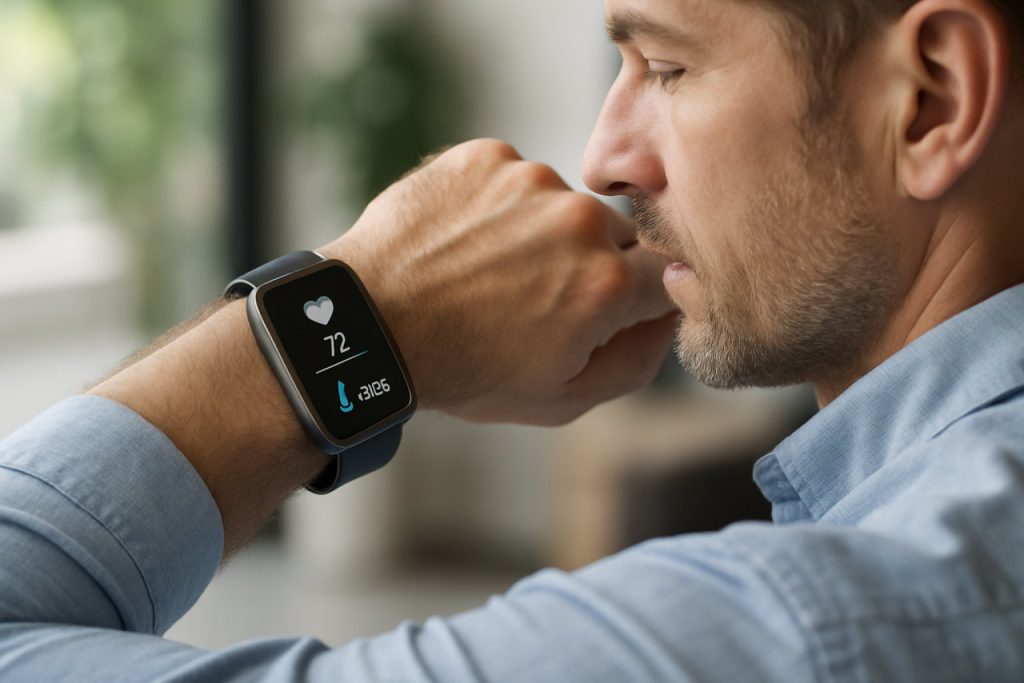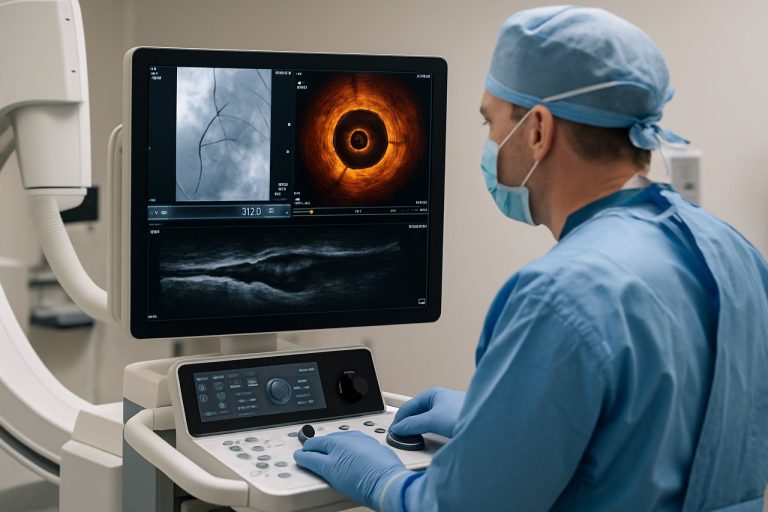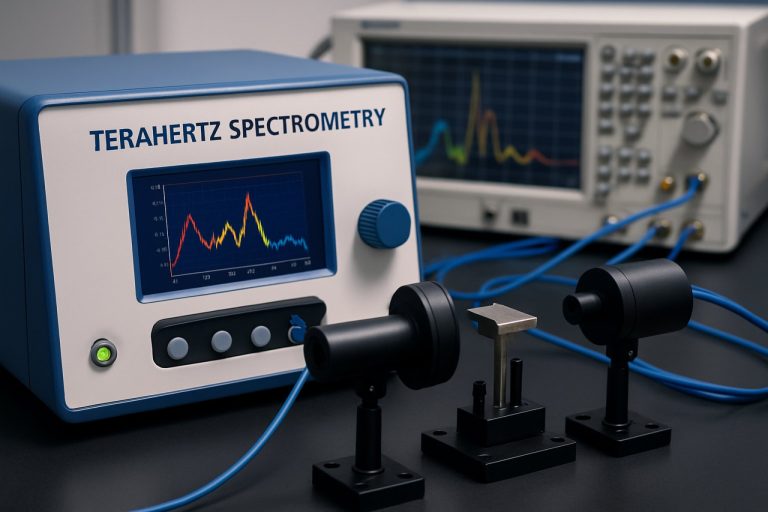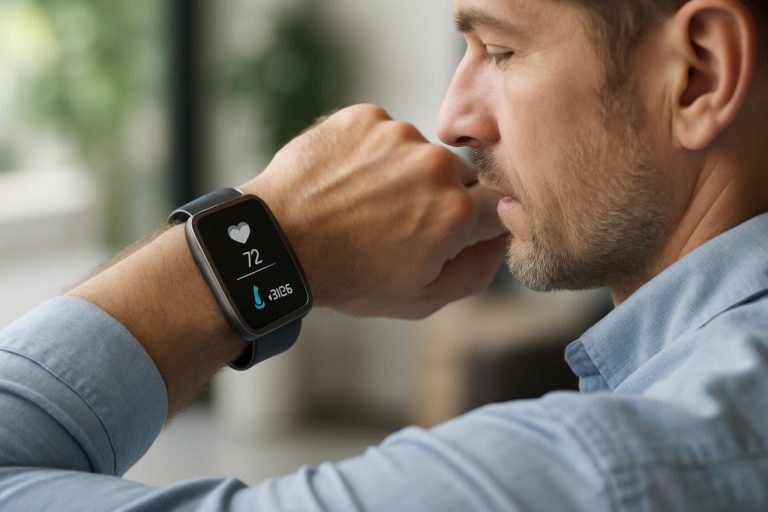
Revolutionizing Patient Care: How Thermoelectric Wearable Healthcare Devices Will Transform Health Monitoring and Therapy in 2025 and Beyond. Explore the Breakthroughs, Market Surge, and Future Roadmap of This Disruptive Technology.
- Executive Summary: Key Insights and 2025 Market Highlights
- Market Overview: Defining Thermoelectric Wearable Healthcare Devices
- Market Size & Forecast (2025–2030): Growth Drivers, $2.1B Valuation, and 18% CAGR Analysis
- Technology Landscape: Innovations in Thermoelectric Materials and Device Engineering
- Competitive Analysis: Leading Players, Startups, and Strategic Partnerships
- Applications: From Continuous Health Monitoring to On-Body Therapeutics
- Regulatory Environment and Reimbursement Trends
- Challenges and Barriers: Technical, Clinical, and Commercial Hurdles
- Regional Analysis: North America, Europe, Asia-Pacific, and Emerging Markets
- Future Outlook: Next-Gen Devices, Integration with AI & IoT, and Market Opportunities to 2030
- Sources & References
Executive Summary: Key Insights and 2025 Market Highlights
The global market for thermoelectric wearable healthcare devices is poised for significant growth in 2025, driven by advancements in material science, miniaturization, and the increasing demand for continuous, non-invasive health monitoring. Thermoelectric wearables utilize the Seebeck effect to convert body heat into electrical energy, enabling self-powered operation for sensors and health-tracking devices. This technology addresses critical challenges in wearable healthcare, such as battery life and user comfort, making it highly attractive for both consumers and healthcare providers.
Key insights for 2025 indicate a surge in adoption across applications including remote patient monitoring, chronic disease management, and fitness tracking. Major healthcare device manufacturers and technology companies are investing in research and development to enhance the efficiency and flexibility of thermoelectric materials, with a focus on integrating these solutions into smartwatches, patches, and textile-based wearables. For instance, Philips and Medtronic are exploring partnerships and pilot programs to incorporate thermoelectric modules into next-generation health monitoring platforms.
The 2025 market landscape is characterized by several notable trends:
- Increased collaboration between material science innovators and medical device manufacturers to improve device ergonomics and energy harvesting efficiency.
- Regulatory support from organizations such as the U.S. Food and Drug Administration (FDA) and the European Medicines Agency (EMA) for the approval of novel wearable health technologies.
- Growing consumer awareness of preventive healthcare and the benefits of continuous physiological monitoring, fueling demand for self-powered, maintenance-free devices.
- Emergence of flexible, skin-conformal thermoelectric generators developed by research institutions and commercialized by companies like Sony Group Corporation and Samsung Electronics.
Looking ahead, the market is expected to witness robust growth, with Asia-Pacific and North America leading in adoption due to strong healthcare infrastructure and high consumer acceptance of wearable technologies. Strategic investments, regulatory clarity, and ongoing innovation will be pivotal in shaping the competitive landscape and accelerating the integration of thermoelectric wearables into mainstream healthcare by the end of 2025.
Market Overview: Defining Thermoelectric Wearable Healthcare Devices
Thermoelectric wearable healthcare devices are an emerging segment within the broader wearable medical technology market, leveraging thermoelectric materials to monitor, manage, or enhance physiological functions. These devices utilize the thermoelectric effect—where temperature differences are converted into electrical voltage, or vice versa—to power sensors, regulate temperature, or harvest body heat for energy. The integration of thermoelectric technology into wearables enables continuous, non-invasive health monitoring and, in some cases, therapeutic interventions.
The market for thermoelectric wearable healthcare devices is driven by the growing demand for personalized and real-time health monitoring solutions. These devices are particularly valuable for applications such as continuous temperature monitoring, wearable electrocardiogram (ECG) sensors, and smart patches for chronic disease management. The ability to harvest energy from body heat reduces reliance on batteries, enabling longer device lifespans and greater user comfort. This is especially relevant for remote patient monitoring and long-term health management, where device maintenance and user compliance are critical.
Key players in the market, such as Philips and Medtronic, are exploring the integration of thermoelectric modules into their wearable product lines, aiming to enhance device autonomy and expand functionalities. Startups and research institutions are also contributing to innovation, focusing on flexible thermoelectric materials and miniaturized modules that can be seamlessly incorporated into textiles or skin patches. For example, King Abdullah University of Science and Technology (KAUST) has developed flexible thermoelectric generators for wearable applications, highlighting the role of academic research in advancing the field.
The market landscape is shaped by technological advancements, regulatory considerations, and the increasing prevalence of chronic diseases. Regulatory bodies such as the U.S. Food and Drug Administration (FDA) are establishing guidelines for the safety and efficacy of wearable medical devices, including those utilizing thermoelectric technology. As the healthcare industry shifts toward preventive care and remote monitoring, thermoelectric wearables are poised to play a significant role in enabling continuous, unobtrusive health tracking and intervention.
Market Size & Forecast (2025–2030): Growth Drivers, $2.1B Valuation, and 18% CAGR Analysis
The global market for thermoelectric wearable healthcare devices is poised for significant expansion between 2025 and 2030, with projections indicating a valuation of approximately $2.1 billion by 2030. This growth is underpinned by a robust compound annual growth rate (CAGR) of around 18% during the forecast period. Several key factors are driving this upward trajectory.
First, the increasing prevalence of chronic diseases and the aging global population are fueling demand for continuous, non-invasive health monitoring solutions. Thermoelectric wearables, which leverage the Seebeck effect to convert body heat into electrical energy, enable real-time tracking of vital signs such as temperature, heart rate, and hydration levels. This capability aligns with the growing emphasis on preventive healthcare and remote patient monitoring, especially in the wake of the COVID-19 pandemic.
Second, advancements in thermoelectric materials and miniaturization technologies have significantly improved the efficiency, comfort, and wearability of these devices. Leading manufacturers such as Phononic, Inc. and Laird Thermal Systems are investing in research and development to enhance device performance and integrate smart features, such as wireless connectivity and data analytics, further broadening their application in both clinical and consumer health settings.
Third, supportive regulatory frameworks and increased funding for digital health innovation are accelerating market adoption. Organizations like the U.S. Food and Drug Administration (FDA) and the European Commission Directorate-General for Health and Food Safety are streamlining approval processes for wearable medical devices, encouraging faster commercialization and uptake.
Geographically, North America and Europe are expected to maintain leading market shares due to advanced healthcare infrastructure and high consumer awareness. However, the Asia-Pacific region is anticipated to witness the fastest growth, driven by rising healthcare expenditures, expanding middle-class populations, and increasing adoption of wearable technologies.
In summary, the thermoelectric wearable healthcare device market is set for dynamic growth through 2030, propelled by technological innovation, demographic trends, and supportive policy environments. Stakeholders across the value chain—from material suppliers to device manufacturers and healthcare providers—are well-positioned to benefit from this expanding market landscape.
Technology Landscape: Innovations in Thermoelectric Materials and Device Engineering
The technology landscape for thermoelectric wearable healthcare devices in 2025 is marked by rapid advancements in both material science and device engineering, enabling more efficient, flexible, and user-friendly solutions for continuous health monitoring. Thermoelectric devices, which convert body heat into electrical energy, are increasingly being integrated into wearables to power sensors and transmitters without the need for external batteries or frequent recharging.
Recent innovations in thermoelectric materials focus on enhancing the figure of merit (ZT), a key parameter that determines conversion efficiency. Researchers are developing novel nanostructured materials, such as bismuth telluride (Bi2Te3) and organic-inorganic hybrid composites, which offer improved flexibility and higher power output at the low temperature gradients typical of human skin. These materials are being engineered at the molecular level to optimize electrical conductivity while minimizing thermal conductivity, a balance crucial for wearable applications. For example, the integration of carbon nanotubes and conducting polymers has led to flexible thermoelectric films that can conform to the body’s contours without compromising performance.
On the device engineering front, miniaturization and integration are key trends. Companies like Sony Group Corporation and Panasonic Holdings Corporation are exploring ultra-thin, lightweight modules that can be seamlessly embedded into textiles or skin patches. These devices are designed to harvest energy from small temperature differences between the skin and ambient air, powering biosensors that monitor vital signs such as heart rate, body temperature, and hydration levels. Advanced encapsulation techniques are also being employed to protect sensitive thermoelectric elements from sweat and mechanical stress, ensuring durability during daily wear.
Furthermore, the integration of wireless communication modules, such as Bluetooth Low Energy (BLE), is enabling real-time data transmission to smartphones and cloud platforms. This connectivity supports continuous health monitoring and personalized feedback, aligning with the broader trend toward remote and preventive healthcare. Industry collaborations, such as those led by Koninklijke Philips N.V. and Samsung Electronics Co., Ltd., are accelerating the commercialization of these technologies, with pilot products already undergoing clinical validation.
In summary, the 2025 landscape for thermoelectric wearable healthcare devices is defined by breakthroughs in flexible, high-efficiency materials and sophisticated device architectures, paving the way for self-powered, unobtrusive health monitoring solutions.
Competitive Analysis: Leading Players, Startups, and Strategic Partnerships
The thermoelectric wearable healthcare device market is rapidly evolving, driven by advances in material science, miniaturization, and the growing demand for continuous health monitoring. In 2025, the competitive landscape is shaped by established technology conglomerates, innovative startups, and a web of strategic partnerships that accelerate product development and market penetration.
Among the leading players, Sony Group Corporation has made significant strides with its Reon Pocket series, leveraging proprietary thermoelectric modules for personal thermal management and exploring integration with health monitoring features. Koninklijke Philips N.V. is also active in this space, building on its expertise in wearable health technologies to develop devices that utilize thermoelectric generators for self-powered biosensing.
Startups are injecting agility and novel approaches into the sector. Embr Labs, Inc. has commercialized wrist-worn devices that use thermoelectric cooling and heating to provide thermal comfort, with ongoing research into applications for stress and sleep management. Xsensio S.A. is developing skin-interfaced wearables that combine thermoelectric energy harvesting with real-time biochemical sensing, targeting chronic disease management.
Strategic partnerships are a hallmark of this market’s growth. Samsung Electronics Co., Ltd. has entered collaborations with academic institutions and material suppliers to enhance the efficiency and flexibility of thermoelectric modules for integration into next-generation smartwatches and fitness bands. Panasonic Corporation is working with healthcare providers to pilot thermoelectric-powered patches for remote patient monitoring, aiming to reduce battery dependency and improve device comfort.
Additionally, industry alliances such as those fostered by the International Energy Agency and the Institute of Electrical and Electronics Engineers (IEEE) are facilitating the standardization of thermoelectric materials and device interoperability, which is crucial for widespread adoption in healthcare.
In summary, the competitive landscape for thermoelectric wearable healthcare devices in 2025 is characterized by a blend of established electronics giants, nimble startups, and collaborative ventures, all striving to deliver more efficient, comfortable, and self-powered health monitoring solutions.
Applications: From Continuous Health Monitoring to On-Body Therapeutics
Thermoelectric wearable healthcare devices are rapidly transforming the landscape of personalized medicine by leveraging the body’s own heat for both continuous health monitoring and on-body therapeutics. These devices utilize thermoelectric materials to convert temperature gradients—such as the difference between skin temperature and ambient air—into electrical energy, enabling self-powered operation and reducing reliance on bulky batteries. This capability is particularly valuable for continuous health monitoring, where uninterrupted data collection is essential for tracking vital signs like body temperature, heart rate, and even metabolic activity over extended periods.
In continuous health monitoring, thermoelectric wearables can power sensors that detect physiological changes in real time. For example, flexible thermoelectric patches can be integrated into smartwatches or adhesive skin patches, providing ongoing surveillance of temperature fluctuations that may indicate fever, infection, or inflammation. Such devices are being explored by organizations like Samsung Electronics Co., Ltd. and Sony Group Corporation for next-generation wearable health platforms.
Beyond monitoring, thermoelectric devices are also being developed for on-body therapeutics. By harnessing the Peltier effect, these wearables can deliver localized heating or cooling to targeted areas, offering non-invasive pain relief, inflammation reduction, or thermal therapy for chronic conditions. For instance, a thermoelectric patch could provide controlled cooling to manage swelling after injury or deliver heat to alleviate muscle stiffness. Research institutions and companies such as Panasonic Holdings Corporation are actively investigating these therapeutic applications.
The integration of thermoelectric technology with wireless communication modules further enhances the utility of these devices, enabling seamless data transmission to healthcare providers for remote diagnostics and telemedicine. This is particularly relevant for elderly or chronically ill patients who require constant supervision without frequent hospital visits. As the field advances, collaborations between material scientists, device manufacturers, and healthcare providers—such as those fostered by imec—are expected to accelerate the adoption of thermoelectric wearables in mainstream healthcare by 2025.
Regulatory Environment and Reimbursement Trends
The regulatory environment for thermoelectric wearable healthcare devices is evolving rapidly as these technologies gain traction in clinical and consumer health markets. In 2025, regulatory agencies such as the U.S. Food and Drug Administration (FDA) and the European Commission Directorate-General for Health and Food Safety are increasingly focused on ensuring the safety, efficacy, and data security of wearable devices that utilize thermoelectric technology for monitoring or therapeutic purposes. These devices, which convert body heat into electrical energy to power sensors or deliver localized therapy, often fall under the category of medical devices, requiring compliance with standards such as the FDA’s 21 CFR Part 820 (Quality System Regulation) and the EU’s Medical Device Regulation (MDR 2017/745).
A key regulatory trend is the emphasis on cybersecurity and data privacy, given that thermoelectric wearables frequently transmit sensitive health data wirelessly. Regulatory bodies are mandating robust encryption and secure data handling protocols, aligning with broader digital health regulations. Additionally, clinical validation is increasingly required, with agencies expecting evidence from human trials demonstrating device performance, biocompatibility, and long-term safety.
Reimbursement for thermoelectric wearable healthcare devices remains a complex landscape. In the United States, the Centers for Medicare & Medicaid Services (CMS) has begun to recognize certain wearable devices under existing reimbursement codes, particularly when they provide remote physiological monitoring or support chronic disease management. However, coverage is often contingent on FDA clearance and demonstration of clinical utility. Private insurers are also showing growing interest, especially as real-world evidence accumulates regarding the cost-effectiveness and patient outcomes associated with these devices.
In Europe, reimbursement policies vary by country, but there is a general trend toward supporting digital health innovations that can demonstrate value in reducing hospitalizations or improving chronic care. National health technology assessment (HTA) bodies are increasingly evaluating thermoelectric wearables for inclusion in public health programs, provided they meet stringent clinical and economic criteria.
Overall, the regulatory and reimbursement environment in 2025 is characterized by heightened scrutiny, but also by growing opportunities for thermoelectric wearable healthcare devices that can clearly demonstrate safety, efficacy, and value to patients and healthcare systems.
Challenges and Barriers: Technical, Clinical, and Commercial Hurdles
Thermoelectric wearable healthcare devices, which harness body heat to generate power for sensors and monitoring systems, face a range of challenges that impede their widespread adoption. These hurdles span technical, clinical, and commercial domains, each presenting unique barriers to development and deployment.
Technical Challenges: The efficiency of thermoelectric materials remains a primary concern. Most commercially available thermoelectric materials, such as bismuth telluride, offer limited conversion efficiency at the low temperature gradients typical of human skin (Ferrotec Corporation). Additionally, integrating these materials into flexible, biocompatible substrates without compromising performance is complex. Durability and long-term stability under repeated mechanical stress, sweat, and environmental exposure are also significant issues. Power output is often insufficient to support continuous operation of advanced biosensors or wireless communication modules, necessitating hybrid power solutions or energy storage components.
Clinical Barriers: For clinical acceptance, thermoelectric wearables must demonstrate reliable, accurate, and consistent performance across diverse patient populations. Variability in skin temperature, placement, and movement can affect device output and sensor readings, potentially compromising data quality. Biocompatibility and skin irritation are additional concerns, as prolonged contact with thermoelectric modules or adhesives may cause discomfort or adverse reactions. Regulatory approval processes, such as those overseen by the U.S. Food and Drug Administration, require extensive validation of safety and efficacy, which can be time-consuming and costly.
Commercial Hurdles: From a market perspective, the high cost of advanced thermoelectric materials and manufacturing processes limits scalability. Achieving mass production while maintaining quality and affordability is a significant challenge. Furthermore, the value proposition of thermoelectric wearables must be clearly demonstrated to both healthcare providers and consumers, especially when competing with established battery-powered alternatives. Intellectual property concerns and the need for cross-industry collaboration—spanning materials science, electronics, and healthcare—add further complexity to commercialization efforts.
Addressing these multifaceted challenges will require coordinated advances in material science, device engineering, clinical validation, and business strategy. Only through overcoming these barriers can thermoelectric wearable healthcare devices realize their full potential in the digital health landscape.
Regional Analysis: North America, Europe, Asia-Pacific, and Emerging Markets
The regional landscape for thermoelectric wearable healthcare devices in 2025 is shaped by varying levels of technological advancement, healthcare infrastructure, and consumer adoption across North America, Europe, Asia-Pacific, and emerging markets.
- North America: The United States and Canada lead in the adoption of thermoelectric wearable healthcare devices, driven by robust R&D investment, a strong presence of medical device manufacturers, and a tech-savvy population. Regulatory support from agencies such as the U.S. Food and Drug Administration has facilitated the integration of innovative wearables into clinical and consumer health settings. Collaborations between technology firms and healthcare providers are accelerating the commercialization of devices for chronic disease management, remote monitoring, and personalized therapy.
- Europe: European countries, particularly Germany, the UK, and the Nordic region, are witnessing steady growth in the thermoelectric wearables market. The region benefits from strong public healthcare systems and initiatives by the European Commission to promote digital health. Emphasis on data privacy and patient safety has led to the development of secure, compliant devices. The focus is on applications for elderly care, rehabilitation, and preventive health, with increasing investment in research through programs like Horizon Europe.
- Asia-Pacific: The Asia-Pacific region is emerging as a dynamic market, with countries like Japan, South Korea, and China investing heavily in wearable healthcare technology. Supportive government policies, such as those from the Ministry of Health, Labour and Welfare (Japan) and the National Health Commission of the People’s Republic of China, are fostering innovation and local manufacturing. The large population base, rising chronic disease prevalence, and increasing health awareness are driving demand for affordable, energy-efficient thermoelectric wearables.
- Emerging Markets: In regions such as Latin America, the Middle East, and Africa, adoption is at an early stage but growing. Limited healthcare infrastructure and lower purchasing power present challenges, but international partnerships and pilot projects are expanding access. Organizations like the World Health Organization are supporting initiatives to deploy wearable health technologies for remote monitoring and disease prevention in underserved communities.
Overall, while North America and Europe remain at the forefront of innovation and adoption, Asia-Pacific is rapidly catching up, and emerging markets are beginning to realize the potential of thermoelectric wearable healthcare devices for improving health outcomes in diverse settings.
Future Outlook: Next-Gen Devices, Integration with AI & IoT, and Market Opportunities to 2030
The future of thermoelectric wearable healthcare devices is poised for significant transformation as advancements in materials science, artificial intelligence (AI), and the Internet of Things (IoT) converge. By 2030, next-generation devices are expected to move beyond basic temperature monitoring, offering multifunctional health tracking, real-time analytics, and seamless integration with broader digital health ecosystems.
Emerging thermoelectric materials, such as flexible bismuth telluride and organic-inorganic hybrids, are enabling the development of lighter, more efficient, and skin-conformable devices. These innovations are critical for continuous, unobtrusive health monitoring, particularly for chronic disease management and elderly care. Companies like Sony Group Corporation and Xiaomi Corporation are already exploring flexible thermoelectric modules for wearables, signaling a shift toward mass-market adoption.
Integration with AI is set to revolutionize the utility of thermoelectric wearables. AI algorithms can process the vast streams of physiological data generated by these devices, enabling early detection of anomalies such as fever, dehydration, or circulatory issues. This real-time analysis supports personalized healthcare interventions and remote patient monitoring, aligning with the growing trend of telemedicine. Samsung Electronics Co., Ltd. and Koninklijke Philips N.V. are investing in AI-driven health platforms that could incorporate thermoelectric sensor data for more comprehensive health insights.
The IoT ecosystem further amplifies the potential of thermoelectric wearables. By connecting devices to cloud-based health records and smart home systems, users and healthcare providers can access continuous, context-aware health data. This connectivity also enables predictive maintenance of devices and remote firmware updates, ensuring optimal performance and security. Organizations like Bluetooth SIG, Inc. and Connectivity Standards Alliance are developing protocols to support secure, low-power communication for medical wearables.
Market opportunities through 2030 are substantial, driven by rising demand for preventive healthcare, aging populations, and the proliferation of smart consumer devices. Strategic partnerships between material innovators, device manufacturers, and digital health platforms will be crucial for scaling production and ensuring regulatory compliance. As the technology matures, thermoelectric wearables are expected to become integral to personalized, data-driven healthcare, offering new revenue streams and improved patient outcomes.
Sources & References
- Philips
- Medtronic
- European Medicines Agency (EMA)
- King Abdullah University of Science and Technology (KAUST)
- Laird Thermal Systems
- European Commission Directorate-General for Health and Food Safety
- Xsensio S.A.
- International Energy Agency
- Institute of Electrical and Electronics Engineers (IEEE)
- imec
- Centers for Medicare & Medicaid Services (CMS)
- Ferrotec Corporation
- Ministry of Health, Labour and Welfare (Japan)
- National Health Commission of the People’s Republic of China
- World Health Organization
- Bluetooth SIG, Inc.
- Connectivity Standards Alliance



